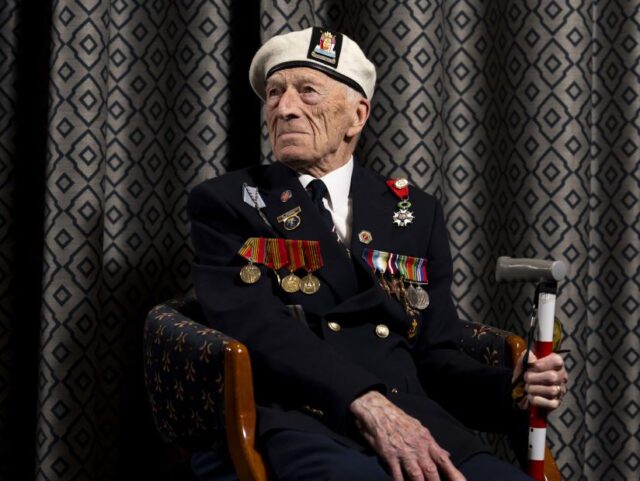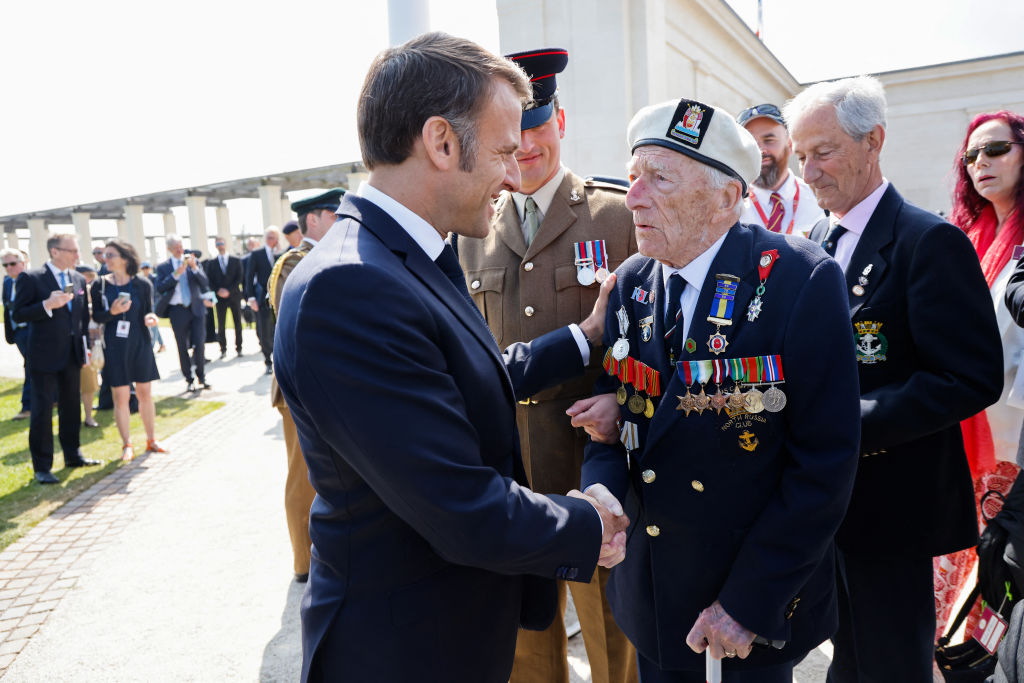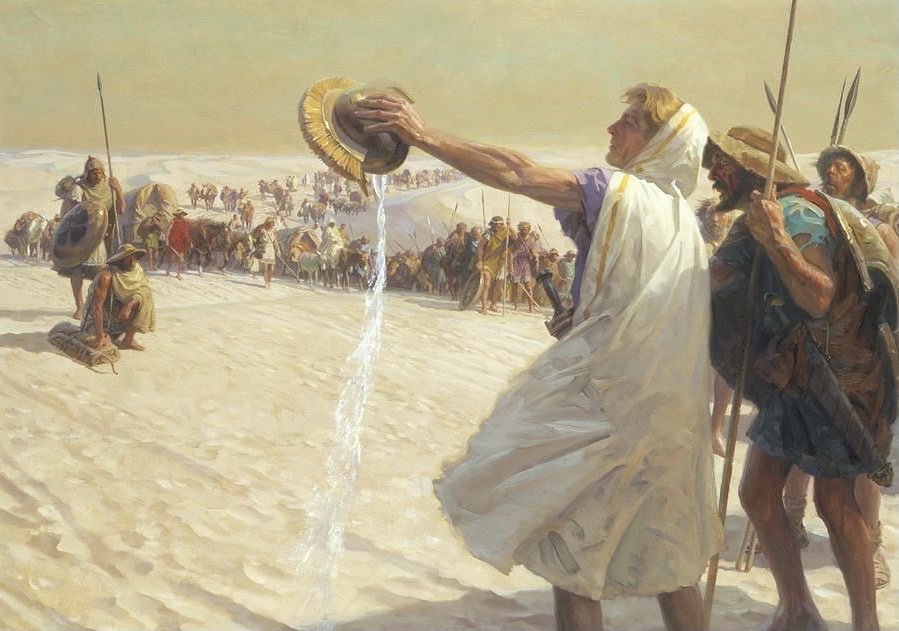
Category: Leadership of the highest kind
Its a pity that they were not given to West Point or the US Army Museum. But that’s just me! Grumpy

Now the real speech below:
Be seated.
Men, all this stuff you hear about America not wanting to fight, wanting to stay out of the war, is a lot of horse dung. Americans love to fight.
All real Americans love the sting and clash of battle. When you were kids, you all admired the champion marble shooter, the fastest runner, the big-league ball players and the toughest boxers. Americans love a winner and will not tolerate a loser. Americans play to win all the time. I wouldn’t give a hoot in hell for a man who lost, and laughed.
That’s why Americans have never lost and will never lose a war. The very thought of losing is hateful to America. Battle is the most significant competition in which a man can indulge. It brings out all that is best and it removes all that is base.
You are not all going to die. Only two percent of you right here today would be killed in a major battle. Every man is scared in his first action. If he says he’s not, he’s a goddamn liar. But the real hero is the man who fights even though he’s scared. Some men will get over their fright in a minute under fire, some take an hour, and for some it takes days. But the real man never lets his fear of death overpower his honor, his sense of duty to his country, and his innate manhood.
All through your army career you men have bitched about what you call ‘this chicken-shit drilling.’ That is all for a purpose—to ensure instant obedience to orders and to create constant alertness. This must be bred into every soldier. I don’t give a fuck for a man who is not always on his toes. But the drilling has made veterans of all you men. You are ready! A man has to be alert all the time if he expects to keep on breathing. If not, some German son-of-a-bitch will sneak up behind him and beat him to death with a sock full of shit.
There are four hundred neatly marked graves in Sicily, all because one man went to sleep on the job—but they are German graves, because we caught the bastard asleep before his officer did.
An army is a team. It lives, eats, sleeps, and fights as a team. This individual hero stuff is bullshit. The bilious bastards who write that stuff for the Saturday Evening Post don’t know any more about real battle than they do about fucking. Now we have the finest food and equipment, the best spirit and the best men in the world. You know, by God, I actually pity these poor bastards we’re going up against, by God I do.
All the real heroes are not storybook combat fighters. Every single man in the army plays a vital role. So don’t ever let up. Don’t ever think that your job is unimportant. What if every truck driver decided that he didn’t like the whine of the shells and turned yellow and jumped headlong into a ditch? That cowardly bastard could say to himself, ‘Hell, they won’t miss me, just one man in thousands.’ What if every man said that? Where in the hell would we be then? No, thank God, Americans don’t say that. Every man does his job. Every man is important.
The ordnance men are needed to supply the guns, the quartermaster is needed to bring up the food and clothes for us because where we are going there isn’t a hell of a lot to steal. Every last damn man in the mess hall, even the one who boils the water to keep us from getting the GI shits, has a job to do.
Each man must think not only of himself, but think of his buddy fighting alongside him. We don’t want yellow cowards in the army. They should be killed off like flies. If not, they will go back home after the war, goddamn cowards, and breed more cowards. The brave men will breed more brave men. Kill off the goddamn cowards and we’ll have a nation of brave men.
One of the bravest men I saw in the African campaign was on a telegraph pole in the midst of furious fire while we were moving toward Tunis. I stopped and asked him what the hell he was doing up there. He answered, ‘Fixing the wire, sir.’ ‘Isn’t it a little unhealthy up there right now?’ I asked. ‘Yes sir, but this goddamn wire has got to be fixed.’ I asked, ‘Don’t those planes strafing the road bother you?’ And he answered, ‘No sir, but you sure as hell do.’
Now, there was a real soldier. A real man. A man who devoted all he had to his duty, no matter how great the odds, no matter how seemingly insignificant his duty appeared at the time.
And you should have seen the trucks on the road to Gabès. Those drivers were magnificent. All day and all night they crawled along those son-of-a-bitch roads, never stopping, never deviating from their course with shells bursting all around them. Many of the men drove over 40 consecutive hours. We got through on good old American guts. These were not combat men. But they were soldiers with a job to do. They were part of a team. Without them the fight would have been lost.
Sure, we all want to go home. We want to get this war over with. But you can’t win a war lying down. The quickest way to get it over with is to get the bastards who started it. We want to get the hell over there and clean the goddamn thing up, and then get at those purple-pissing Japs.[a]
The quicker they are whipped, the quicker we go home. The shortest way home is through Berlin and Tokyo. So keep moving. And when we get to Berlin, I am personally going to shoot that paper-hanging son-of-a-bitch Hitler.
When a man is lying in a shell hole, if he just stays there all day, a Boche will get him eventually. The hell with that. My men don’t dig foxholes. Foxholes only slow up an offensive. Keep moving. We’ll win this war, but we’ll win it only by fighting and showing the Germans that we’ve got more guts than they have or ever will have. We’re not just going to shoot the bastards, we’re going to rip out their living goddamned guts and use them to grease the treads of our tanks. We’re going to murder those lousy Hun cocksuckers by the bushel-fucking-basket.
Some of you men are wondering whether or not you’ll chicken out under fire. Don’t worry about it. I can assure you that you’ll all do your duty. War is a bloody business, a killing business.
The Nazis are the enemy. Wade into them, spill their blood or they will spill yours. Shoot them in the guts. Rip open their belly. When shells are hitting all around you and you wipe the dirt from your face and you realize that it’s not dirt, it’s the blood and guts of what was once your best friend, you’ll know what to do.
I don’t want any messages saying ‘I’m holding my position.’ We’re not holding a goddamned thing. We’re advancing constantly and we’re not interested in holding anything except the enemy’s balls. We’re going to hold him by his balls and we’re going to kick him in the ass; twist his balls and kick the living shit out of him all the time. Our plan of operation is to advance and keep on advancing. We’re going to go through the enemy like shit through a tinhorn.
There will be some complaints that we’re pushing our people too hard. I don’t give a damn about such complaints. I believe that an ounce of sweat will save a gallon of blood. The harder we push, the more Germans we kill. The more Germans we kill, the fewer of our men will be killed. Pushing harder means fewer casualties.
I want you all to remember that. My men don’t surrender. I don’t want to hear of any soldier under my command being captured unless he is hit. Even if you are hit, you can still fight. That’s not just bullshit either. I want men like the lieutenant in Libya who, with a Luger against his chest, swept aside the gun with his hand, jerked his helmet off with the other and busted the hell out of the Boche with the helmet. Then he picked up the gun and he killed another German. All this time the man had a bullet through his lung. That’s a man for you!
Don’t forget, you don’t know I’m here at all. No word of that fact is to be mentioned in any letters. The world is not supposed to know what the hell they did with me. I’m not supposed to be commanding this army. I’m not even supposed to be in England. Let the first bastards to find out be the goddamned Germans. Some day, I want them to rise up on their piss-soaked hind legs and howl ‘Ach! It’s the goddamned Third Army and that son-of-a-bitch Patton again!’
Then there’s one thing you men will be able to say when this war is over and you get back home. Thirty years from now when you’re sitting by your fireside with your grandson on your knee and he asks, ‘What did you do in the great World War Two?’ You won’t have to cough and say, ‘Well, your granddaddy shoveled shit in Louisiana.’ No sir, you can look him straight in the eye and say ‘Son, your granddaddy rode with the great Third Army and a son-of-a-goddamned-bitch named George Patton!’
All right, you sons of bitches. You know how I feel. I’ll be proud to lead you wonderful guys in battle anytime, anywhere. That’s all
100-Year-Old Veteran on Live TV: We Fought WW II for Nothing, Britain Less Free Than in 1945

A centenarian Royal Navy veteran took full advantage of an appearance on live television to express his sorrow at the state of modern Britain, saying he and his comrades fought for freedom that has been frittered away, eliciting what critics called a “patronising” response by show hosts.
Royal Navy and Arctic Convoy veteran Alec Penstone told Britain’s ITV breakfast show “the sacrifice wasn’t worth” what the country has since become, mourning the loss of freedom he and his friends fought and died for.
Appearing on Good Morning Britain on Friday for a segment on the upcoming Remembrance Sunday and Armistice Day on November 11th, Penstone was asked what the events commemorating fallen troops from the two World Wars meant, and what his message to the country now is.
Far from the feel-good sentiments the piece had evidently been set up for, 100-year-old Penstone remarked: “I can see in my mind’s eye those rows and rows of white stones.
“All the hundreds of my friends, everybody else, who gave their lives. For what? The country of today. No, I’m sorry, the sacrifice wasn’t worth the result that it is now.”
Comedian Adil Ray, best known for creating Citizen Khan, a BBC comedy about a “British Pakistani” family living in “the capital of British Pakistan” — Birmingham, England — quickly interjected to ask of the veteran: “what do you mean by that, though?”.
Penstone continued: “what we fought for was our freedom. We find that even now, it’s a darn sight worse than what it was when I fought for it”.
Ray’s co-host Kate Garraway, a former journalist and news presenter, placed her hand on Penstone’s shoulder and reassured him that people of her generation did appreciate the sacrifice of the veteran and his friends, before announcing that he was to be presented with a compact-disc of Second World War-era popular music in thanks.
British academic Professor David Betz was among those responding to the turn of events, calling Penstone’s remarks “heartbreaking” and the response from the television hosts “patronising” and “simply infuriating”.

France’s President Emmanuel Macron (L) greets 98-year-old British D-Day veteran Alec Penstone during the UK Ministry of Defence and the Royal British Legion’s commemorative ceremony marking the 80th anniversary of the World War II “D-Day” Allied landings in Normandy France, on June 6, 2024. (Photo by LUDOVIC MARIN/POOL/AFP via Getty Images)
According to a profile by the Royal British Legion, a prominent veterans organisation, Penstone was a young man when the Second World War broke out and initially volunteered as a messenger for the Air Raid Precautions organisation in London during the height of the Blitz.
He said of his time in London during some of the worst bombing of the war: “The moments at 15 years of age, pulling bodies out of bombed buildings you grow up very quickly.”
His father, a veteran of the Great War, made Penstone vow not to serve in an infantry role due to the horrors he’d witnessed in the trenches in the Great War. So he joined the Royal Navy as a submarine-detector, and ended up in one of the most deadly assignments of the Second World War, on the Arctic Convoys. He also served in mine sweeping to clear the sea ready for the D-Day landings, and in the far east, fighting Japan.
The Imperial War Museum states of the Arctic Convoys delivering materiel to the Soviet Union to help them fight Nazi Germany:
Conditions were among the worst faced by any Allied sailors. As well as the Germans, they faced extreme cold, gales and pack ice. The loss rate for ships was higher than any other Allied convoy route.
Over four million tons of supplies were delivered to the Russians. As well as tanks and aircraft, these included less sensational but still vital items like trucks, tractors, telephone wire, railway engines and boots.
While appearing on television today, Mr Penstone was seen wearing the distinctive white beret and badge of the Arctic Convoy Club, a veterans organisation for survivors which disbanded in 2005, given it had so few surviving members.
On his left breast he wore a rack of British medals from his war service including the 1939-45 Star, the Atlantic Star, the Arctic Star, the Pacific Star for service in Burma, and Defence Medal for his service in the ARP.
Separately on a red ribbon, Penstone wore the insignia for a Knight of the Légion d’honneur for role in liberation of France. In 2024, Penstone was personally greeted by French President Emmanuel Macron and thanked for his service.
On his right breast, Penstone wore several Russian Medals including Medal of Ushakov for convoys, and USSR-era convoy medals.
While these are not authorised for wear by Britons in uniform, it is normal practice for British veterans of the Arctic Convoys to wear them on the right breast in this way.

While Alexander the Great is generally considered one of the Worlds Great Captains. He did fuck up a few times in the field just like everyone else.
One of these fubars was by marching his Army thru the dessert of South Iran. (Because his troops would not invade India and instead wanted to go home.So he punished them by doing this.)
Well as you can guess, The Army quickly ran out of water. But then a small amount was found and offered to the King. At the point old Al took the helmet full of water. Went to where everyone could see him and poured it out.
After that his troops would follow him anywhere.